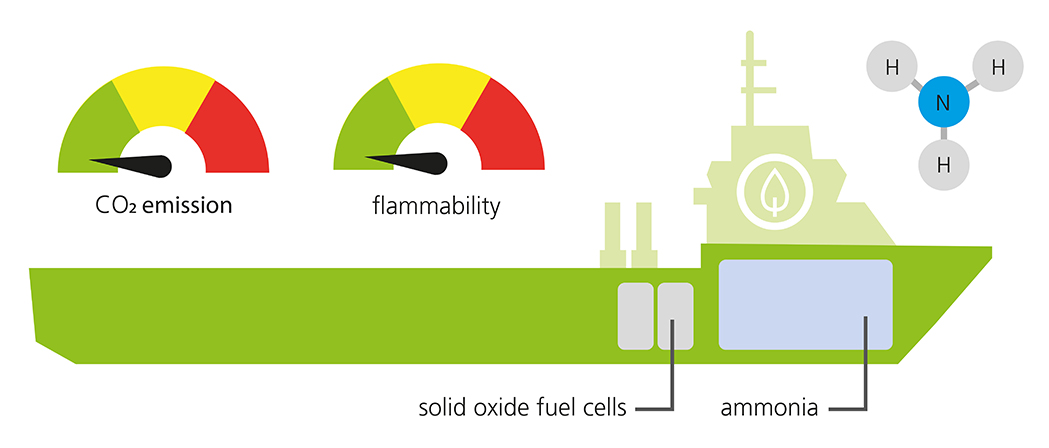DECARBONIZING SHIPPING
Fraunhofer IMM participates in a maritime innovation project looking to install the world’s first high-power fuel cell to be powered by green ammonia on a vessel. The project has been awarded 10 million Euro funding from the European Union.
The ShipFC project is being run by a consortium of 14 European companies and institutions, co-ordinated by the Norwegian cluster organisation NCE Maritime CleanTech, and has been awarded backing from the EU’s Research and Innovation program Horizon 2020 under its Fuel Cells and Hydrogen Joint Undertaking.
Project goal
The project will see an offshore vessel, Viking Energy, which is owned and operated by Eidesvik and on contract to energy major Equinor, have a large 2MW ammonia fuel cell retrofitted, allowing it to sail solely on the clean fuel for up to 3,000 hours annually. As such the project will demonstrate that long-range zero-emission voyages with high power on larger ships is possible.
The goal is also to ensure that a large fuel cell can deliver total electric power to shipboards systems safely and effectively. This is the first time an ammonia-powered fuel cell will be installed on a vessel. A significant part of the project will be the scale up of a 100 kilowatt fuel cell to 2 megawatts.
Fraunhofer IMM’s contribution
In order to establish ammonia as a suitable fuel for fuel cells, nitrogen oxides prevention is an important issue, due to the NOx/SOx Emission Control Areas and increasingly stringent requirements for international shipping. This is exactly the point where Fraunhofer IMM will contribute its expertise. Our scientists and engineers are in charge to develop, design and manufacture catalysts as well as a compact catalytic afterburner, specifically dedicated to ensuring minimized NOx emissions. The fuel afterburner is designed in a way that allows to easily control temperatures and flow compositions.
The fuel cell is going to be tested on land in a parallel project, development and construction will be undertaken by Prototech. Testing will be executed at the Sustainable Energy Norwegian Catapult Centre. The ship-side ammonia system will be supplied by Wärtsilä.
The ammonia fuel cell system will be installed in Viking Energy in late 2023.
For the complete information about the consortium members and the envisaged cooperation, please refer to the original press release issued by NCE Maritime CleanTech.
 Fraunhofer Institute for Microengineering and Microsystems IMM
Fraunhofer Institute for Microengineering and Microsystems IMM